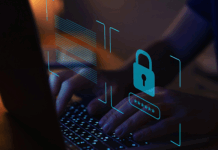Technology-facilitated abuse is where someone harms, harasses, blackmails, threatens, monitors, or impersonates another person via the continuous use of technology. This kind of abuse may occur between strangers, but it can also be alongside other types of abuse in domestic and family violence contexts. Technology is not the problem. The perpetrator/abuser’s behaviour is problematic.
Examples of technology-facilitated abuse:
- Harassment: Leaving constant phone messages, texts, emails, and social media comments.
- Stalking: Tracking a person’s whereabouts using mobile phone apps. Tracking via online banking, hacking into a person’s accounts (social media, bank accounts, emails).
- Impersonation: Posting false information about someone online, pretending to be someone else to watch a person.
- Threats: Threatening to share intimate photos and messages (image-based abuse or revenge porn). Getting other people to ‘pile on’ i.e. via threatening calls, messages or social media.
- Monitoring: Using spyware technology to watch online activity.
- Control: Limiting access to technology.
- Harms: By sending nude photos to someone without the receiver’s consent or by sharing nude images of a person without their consent. This is known as imagine-based abuse.
If you experience any sort of technology-facilitated abuse, there is support available to you. You can also step in and be an active bystander and support a person experiencing technology-facilitated abuse when you witness it.
Remember – doing nothing does harm.
What does it look like on campus?
Below are some examples of how technology-facilitated abuse can manifest on campus.
Remember, we use the AIDED Model of Bystander Action at La Trobe, and it can help guide you decide what action to take to safely intervene. Read more about it here in the article about Sexual Harm.
A – Assign responsibility to another person
I – Intervene indirectly
D – Directly intervene by stepping in
E – Keep evidence of the incident
D – Divert the harm away from the target
Example 1
Your best friend received an abusive text from an ex-partner threatening ‘to make your life hard’ if they don’t see them.
What to do?
- Indirectly intervene by talking to your friend about the situation. Offer your support and let her know that you’re there for her if she decides to address the text.
- Assign responsibility by helping your friend seek external support from Safer Community or the police.
- Advise your friend to keep the text message as evidence of what is going on.
Example 2
You find out that a friends partner has been regularly hacking into their social media account without their consent and reading their private messages. The friend keeps excusing their behaviour.
What to do?
- Indirectly intervene by talking to your friend about the situation. Offer your support and ask them if they know that this is controlling behaviour and not ok.
- Assign responsibility by helping your friend seek external support from Safer Community for further advice.
- Help your friend directly intervene by going with them to speak to the partner about it.
Example 3
In a group chat for your group assignment, other students start to send messages to another student saying their work isn’t good enough, they need to re-do it, and making comments like ‘why are you so dumb?’.
What to do?
- Directly intervene by replying to the group chat by saying, ‘hey, that language is not ok’.
- Directly intervene by messaging the people outside of the group chat and let them know that their behaviour is not ok.
- Assign responsibility by letting your lecturer know what is going on.
- Keep evidence of the messages.
- Indirectly intervene by messaging the student being put down outside of the group chat. Ask if they are ok and offer to let them know about any supports they may need either academically or for their wellbeing.
Example 4
Your friend admits to you that their partner makes them send photos of them at their current location to ‘prove’ that they aren’t lying to them about where they are.
What to do?
- Indirectly intervene by talking to your friend about the situation. Offer your support and ask them if they know that this is controlling behaviour and not ok.
- Assign responsibility by helping your friend seek external support from Safer Community for further advice.
- Help your friend directly intervene by going with them to speak to the partner about it.
Support
If you witness or experience any technology-facilitated abuse and you need further support and advice, La Trobe has a variety of safety and security options you can contact depending on your situation, both on and off-campus. For a full list of extensive services, have a look at this article.
Reporting and disclosing within the University
In circumstances of technology-facilitated abuse or any unacceptable behaviour, consider the following options.
In an Emergency
- Call police or emergency services – (24 hours) Triple Zero ‘000’
- If on-campus then call Campus Security – (24 hours) 03 9479 8888. They need to be aware of the incident to let emergency services on campus if required and can assist until their arrival.
Safer Community
Contact Safer Community to disclose or report an incident.
It is a free, confidential* support service you can contact if you experience or witness concerning, threatening, inappropriate or uncomfortable behaviour. This behaviour can occur on-campus and off-campus, such as on public transport or in the home.
Safer Community provides expert advice and information. They also offer you options and referrals to help resolve your concerns to keep you and others safe.
*Refer to Safer Community website for a full privacy and confidentiality statement and limitations.
Reporting and disclosing outside the University
You may also visit the eSafety Commissioner’s website for more information about technology-facilitated abuse and online safety. In some instances, you may also report image-based abuse and illegal and harmful content.













